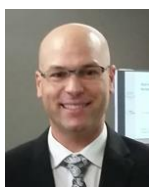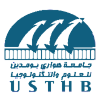Where & when:
University of Science and Technology Houari Boumediene (Algiers), Algeria At Faculty of Earth Sciences, Geography, and Land Planning – June 6th, 2023(10H)
Title of the conference:
Advantages and challenges of using vadose-zone water stable isotope profiles for assessing groundwater recharge .
Conference content:
This conference aims to show the advantages and challenges of using vadose zone water stable isotope profiles to estimate the groundwater recharge rate. Four (4) sites under different climate conditions (arid, semiarid, subhumid, and humid) were selected from North-American to North-African areas, wherein high resolution vertical subsurface sediment sampling along the vadose zone of the investigated sites was conducted. The collected sediment samples were analysed in laboratory to determine their stable isotopes ratios (δ2H and δ18O) and volumetric water content to estimate groundwater recharge. Using stable isotope based method called the “peak shift method”, the humid site revealed high groundwater recharge rates ranging from an average of 41 to 75% of the total precipitation. In this case, stable isotope profiles showed a water transit time of one (1) year through the investigated vadose zone. This estimated transit time was found to match that obtained by numerical modeling using SEEP/W combined with CTRAN code. The peak-shift method was less successful when applied at sites under arid, semiarid, and subhumid climate conditions. Difficulties were mostly related to the absence of a clear distinction of the seasonal isotopic peaks. Using a second stable isotope-based method called the ‘‘piston displacement method’’, annual groundwater recharge rates of 0.2% (±0.1%), 2.5 %, and 18% of the total annual precipitation were obtained for the arid, semiarid, and subhumid sites, respectively. Applying the piston displacement method at the arid site revealed some difficulties due to the scattered distribution of the deeper isotopic signatures, suggesting more uncertainty in groundwater recharge estimates compared to semiarid and subhumid sites.
About the speaker:

Lamine Boumaiza holds a hydrogeology engineering degree from the University of Annaba (Algeria), and master’s as well as Ph.D. degrees in hydrogeology and geological engineering from the University of Quebec (Canada). Previously, Dr. Boumaiza worked in Quebec during 6 years in the sector of geo-environmental consulting, where he conducted more than 50 hydrogeological and environmental studies. Currently, he is working as scientist researcher in hydrogeology at the University of Waterloo (Canada).
He also acts as a lecturer for several undergraduate and graduate hydrogeology-related courses; and provides (as guest-speaker) lectures focusing on contaminant hydrogeology and the impacts of anthropogenic activities on groundwater quality in several Canadian universities, including University of Waterloo and University of Guelph in Ontario, as well as UQAM, UQAC, and Laval University in Quebec. Dr. Boumaiza’s research focus is sustainable groundwater development, combining hydrogeochemical, physical, numerical, and machine learning approaches to better quantify and understand resource dynamics. Across the spectrum of sparse data to large databases, his work integrates the tools at the leading edge of science today to address long-standing water scarcity issues.
Dr. Boumaiza has developed innovative approaches to solve various local and international hydrogeological problems based on numerical/analytical modeling and stable isotope field experimental works, including several hydrogeological studies conducted in Canada, India, and North-African regions.
